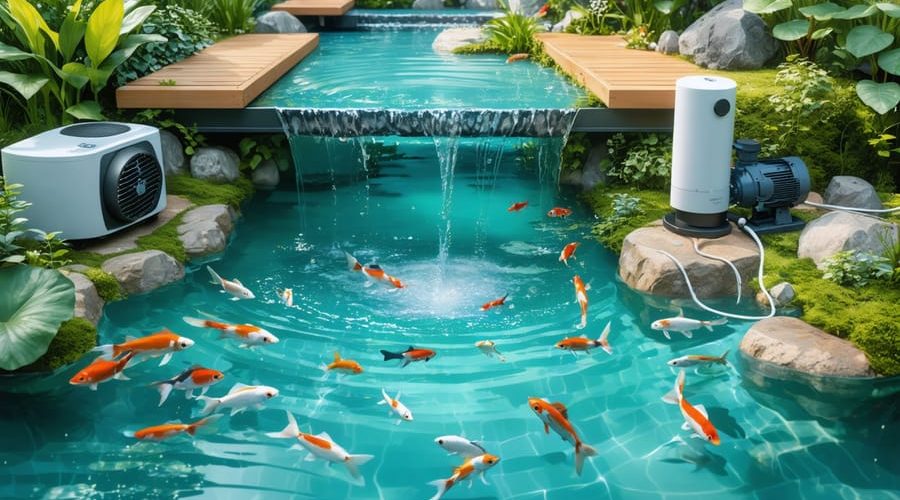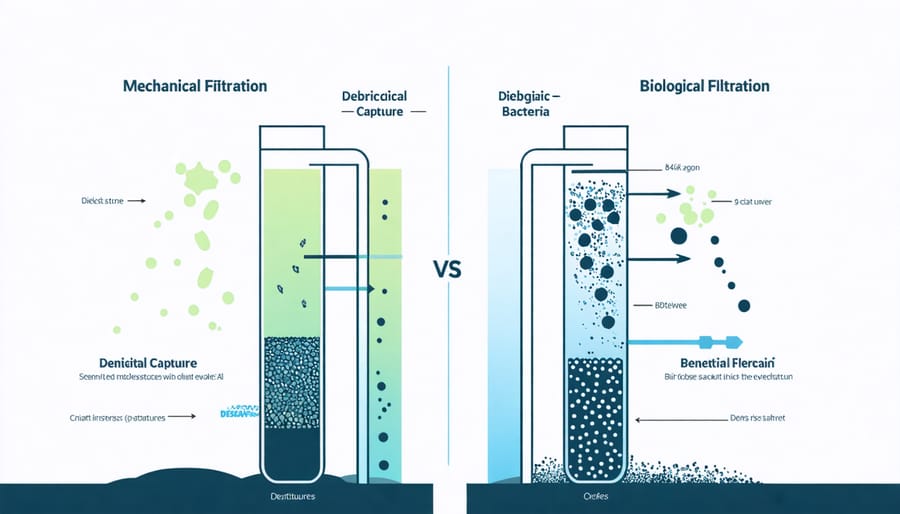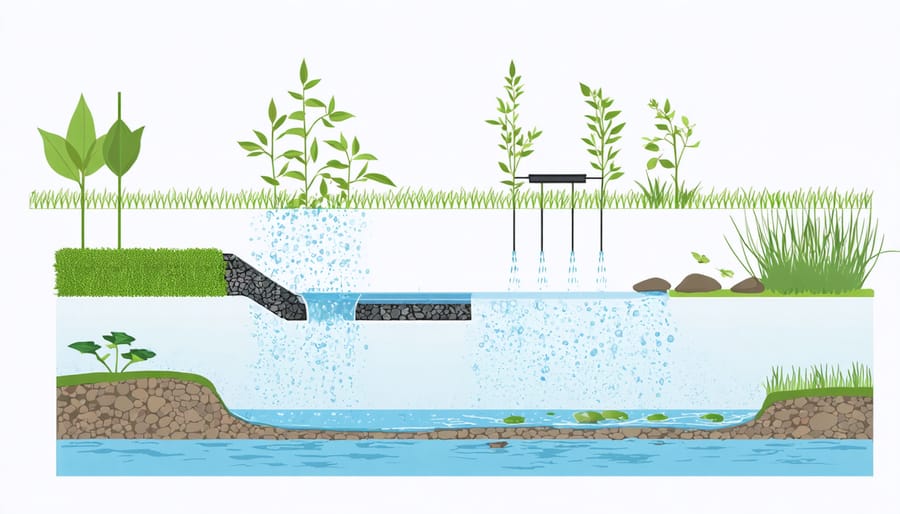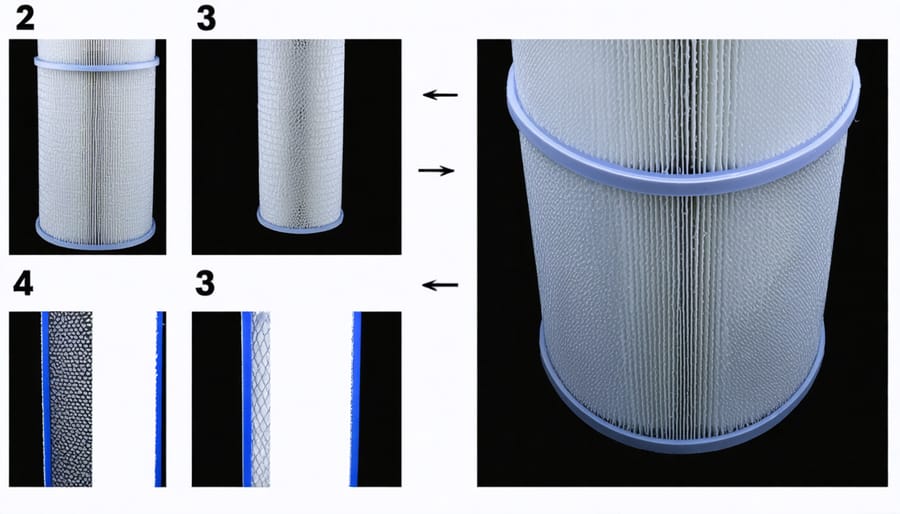
Small Pond Filtration Made Simple: Smart Solutions for Crystal Clear Water
Transform your backyard pond into a crystal-clear oasis with the right filtration system – a crucial investment that protects aquatic life and maintains water quality year-round. Modern pond filtration combines mechanical, biological, and chemical processes to remove debris, neutralize harmful compounds, and sustain a healthy ecosystem. Whether you’re setting up a new water feature or upgrading an existing system, choosing the appropriate filtration solution directly impacts your pond’s clarity, maintenance requirements, and overall ecosystem health.
A well-designed small pond filter does more than just clean water; it creates a balanced environment where fish thrive, plants flourish, and algae remains under control. Today’s compact filtration units offer smart features like UV clarification, energy-efficient pumps, and automated cleaning cycles, making pond maintenance easier than ever for hobbyists and homeowners alike. Understanding your pond’s specific needs – from water volume to fish population – ensures you select a filtration system that delivers optimal performance while fitting seamlessly into your outdoor space.
This comprehensive guide explores the essential components of small pond filtration, helping you make an informed decision about the best system for your aquatic sanctuary.
Understanding Small Pond Filtration Basics
Mechanical vs. Biological Filtration
In any small pond, two essential types of filtration work together to keep your water crystal clear and healthy. External filtration systems typically combine both mechanical and biological filtration for the best results.
Mechanical filtration acts as your pond’s first line of defense, catching physical debris like leaves, twigs, and fish waste. Think of it as a series of sieves, starting with coarse filters that trap larger particles, followed by finer mesh that catches smaller bits. This process prevents debris from breaking down and clouding your water.
Biological filtration, on the other hand, is nature’s way of cleaning water. It relies on beneficial bacteria that break down harmful compounds like ammonia and nitrites into less harmful substances. These helpful microorganisms live in special filter media, converting fish waste and decaying plant matter into nutrients that your pond plants can use.
When both types work together, they create a balanced ecosystem that’s easier to maintain and healthier for your fish and plants. Regular cleaning of mechanical filters and careful maintenance of biological media ensures both systems continue working effectively.

Smart Technology in Modern Pond Filters
Modern pond filtration has entered the smart era, bringing convenience and precision to pond maintenance. Today’s smart filters come equipped with mobile apps that let you monitor water quality parameters right from your smartphone. You can check temperature, pH levels, and filter performance with just a few taps.
Many systems now feature automated cleaning cycles that activate when needed, reducing manual maintenance. Some advanced models even use AI technology to learn your pond’s patterns and adjust filtration accordingly. For example, they might increase flow rates during feeding times or after heavy rainfall.
Smart alerts are another game-changer, notifying you when it’s time to clean the filter or if water parameters fall outside optimal ranges. Some systems can even integrate with home automation platforms, allowing you to control pond equipment alongside other smart home devices.
Energy efficiency is a key benefit of smart technology, as these systems can automatically adjust power usage based on actual filtering needs rather than running at full capacity continuously. This not only saves electricity but also extends the life of your equipment.
Choosing the Right Smart Filtration System
Size and Flow Rate Considerations
Calculating the right filter size and flow rate for your small pond doesn’t have to be complicated. Choosing the right filter size starts with knowing your pond’s volume. Simply multiply your pond’s length by width by average depth (in feet) to get the volume in cubic feet. Then multiply by 7.48 to convert to gallons.
For optimal filtration, your pump should cycle the entire pond volume through the filter at least once every two hours. This means if your pond holds 500 gallons, you’ll need a pump that moves at least 250 gallons per hour (GPH). For ponds with fish, increase this to once per hour, so you’d need a 500 GPH pump.
When selecting your filter, look for one rated slightly above your calculated needs. It’s better to have a bit more filtering capacity than too little. For example, if you need 500 GPH, choose a filter rated for 600-700 GPH. This gives you some wiggle room for future additions to your pond and helps maintain cleaner water.
Remember that these are general guidelines, and factors like fish population, plant coverage, and sun exposure might require adjustments to these calculations. Start with these basic numbers and monitor your pond’s clarity to fine-tune the system.
Smart Features Worth Having
Modern pond filtration systems now come with impressive smart features that can make maintenance easier and more efficient. A WiFi-enabled control panel lets you monitor water quality parameters right from your smartphone, sending alerts when something needs attention. Some systems include automatic backwash scheduling, which saves you the hassle of manual cleaning while ensuring optimal filter performance.
Temperature sensors are particularly useful, as they can trigger automated adjustments to filtration rates based on seasonal changes. During warmer months when biological activity increases, the system can automatically boost filtration to maintain crystal-clear water. Many smart filters also include UV sterilizer scheduling, activating only when needed to conserve energy.
Flow rate monitoring is another game-changer, alerting you immediately if there’s a blockage or pump issue. This early warning system can prevent serious problems before they affect your pond’s ecosystem. Some advanced models even integrate with weather forecasts, adjusting filtration settings before heavy rain or during drought conditions.
LED indicators provide at-a-glance status updates, while built-in diagnostic tools help troubleshoot problems quickly. For those with multiple pond features, smart systems can coordinate with other equipment like fountains and lights, creating synchronized schedules that enhance both efficiency and aesthetics.
Remember that while these features are convenient, they should complement, not replace, regular pond maintenance and monitoring.
Installation and Setup Tips
Optimal Filter Placement
The strategic placement of your pond’s filtration components plays a crucial role in achieving proper water circulation and maintaining a healthy ecosystem. For mechanical filters, position them at the lowest point of your waterfall or stream to capture debris before it enters the main pond. This placement takes advantage of natural gravity flow and makes maintenance easier.
Install biological filters slightly elevated above the water level, allowing filtered water to cascade back into the pond, which adds valuable oxygen. For pump placement, choose a level spot roughly 6-12 inches below the water surface – deep enough to prevent air intake but not so deep that it gets buried in debris.
UV clarifiers work best when installed after mechanical filtration but before biological filtering. This sequence ensures that larger particles are removed before water passes through the UV light, maximizing its effectiveness against algae. For skimmers, position them opposite your waterfall or main water return to create a natural flow pattern across the pond’s surface.
Remember to keep electrical components easily accessible for maintenance while concealing them tastefully with rocks or plants for a more natural appearance.

Smart System Configuration
Modern pond filtration systems now come with smart features that make maintenance and monitoring a breeze. With a WiFi-enabled controller, you can check water parameters and adjust filtration settings right from your smartphone. These smart systems typically include real-time monitoring of water temperature, pH levels, and filter performance.
Installing smart features is surprisingly straightforward. Start by connecting your filter’s control unit to your home’s WiFi network. Most manufacturers provide user-friendly apps that guide you through the setup process. Once connected, you can set up automated schedules for filter cleaning cycles and receive notifications when maintenance is needed.
Some advanced systems even integrate with home automation platforms, allowing you to control your pond filtration alongside other smart home devices. You can set up voice commands through virtual assistants to check filter status or adjust settings hands-free.
A particularly useful feature is the ability to receive alerts when water conditions fall outside optimal ranges. This early warning system helps prevent potential problems before they affect your pond’s ecosystem. Many smart systems also track historical data, helping you understand seasonal patterns and optimize your filtration setup over time.
For those new to smart technology, start with basic monitoring features and gradually explore more advanced capabilities as you become comfortable with the system.
Maintenance and Troubleshooting
Routine Care Schedule
Following a regular maintenance schedule is crucial for keeping your small pond filtration system running efficiently. Here’s a simple timeline of essential tasks to keep your system in top shape:
Daily Tasks:
– Check water flow and pump operation
– Remove visible debris from skimmer basket
– Monitor water level
– Observe fish behavior (if applicable)
Weekly Tasks:
– Clean pre-filter materials
– Check water parameters
– Remove accumulated debris from pond bottom
– Inspect UV bulb functionality
Monthly Tasks:
– Deep clean filter media
– Backwash pressure filters if installed
– Check all connections and hoses
– Clean pump impeller
Seasonal Tasks:
Spring: Complete system inspection, replace UV bulb
Summer: Monitor algae growth, increase cleaning frequency
Fall: Remove falling leaves frequently, prepare for winter
Winter: Reduce maintenance for cold-climate ponds, maintain minimal flow
Annual Tasks:
– Replace filter media as needed
– Deep clean entire system
– Check and replace worn parts
– Evaluate system efficiency
Remember to adjust this schedule based on your specific pond size, fish load, and local climate conditions. Keep a maintenance log to track system performance and identify potential issues early.

Common Issues and Solutions
Even the best pond filtration systems can encounter issues, but most are easily fixable. Green water is a common problem, often caused by excess nutrients or insufficient filtration. The solution usually involves adding more biological media or upgrading your UV clarifier. If you notice reduced water flow, check for pump blockages or clean your filter media, as debris buildup is typically the culprit.
Strange noises from your filtration system might indicate air in the lines or a failing pump. Bleeding the air from the system and ensuring all connections are properly sealed usually resolves this issue. When your water becomes cloudy after cleaning the filter, you’ve likely cleaned it too thoroughly, removing beneficial bacteria. Instead, gently rinse filter media in pond water rather than tap water.
Leaks around filter connections can occur over time due to wear and tear. Regular inspection of seals and prompt replacement of damaged parts prevents water loss. If your filter seems overwhelmed, consider whether your pond’s fish population has outgrown your current system’s capacity. In such cases, upgrading to a larger filter or adding supplementary filtration might be necessary.
Remember that prevention is better than cure – regular maintenance checks can help you spot potential problems before they become serious issues.
A well-designed small pond filtration system is essential for maintaining a healthy and vibrant aquatic ecosystem in your backyard. Throughout this guide, we’ve explored the various components and considerations that make up an effective filtration solution. From mechanical filters that remove debris to biological filters that maintain beneficial bacteria, each element plays a crucial role in keeping your pond water crystal clear and your aquatic life thriving.
Smart filtration technology has revolutionized how we maintain our ponds, offering convenience through automated cleaning cycles, remote monitoring, and energy-efficient operation. By implementing these modern solutions alongside traditional filtering methods, you can create a low-maintenance system that provides optimal results year-round.
Remember that successful pond filtration isn’t just about installing the right equipment – it’s about creating a balanced ecosystem. Regular maintenance, proper sizing, and thoughtful placement of your filtration components will ensure long-lasting performance. Whether you’re a novice pond owner or an experienced water gardener, investing in a quality filtration system will reward you with clearer water, healthier fish, and more time to enjoy your peaceful water garden.
By following the guidelines and tips shared in this article, you’ll be well-equipped to choose, install, and maintain the perfect filtration system for your small pond. The result will be a beautiful, sustainable water feature that brings joy and tranquility to your outdoor space for years to come.
